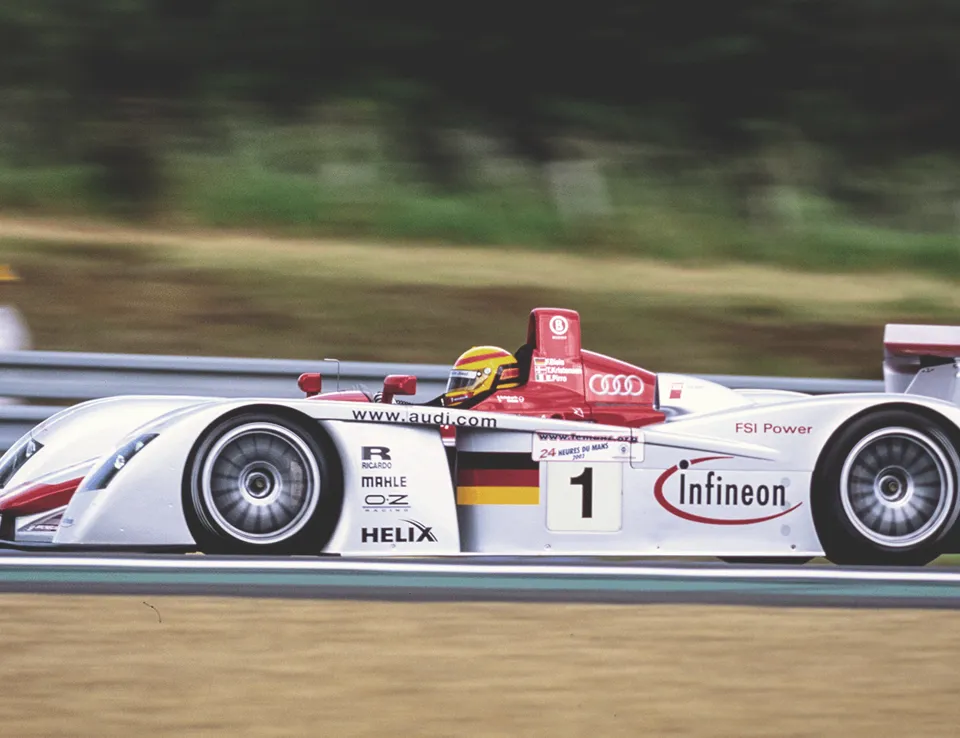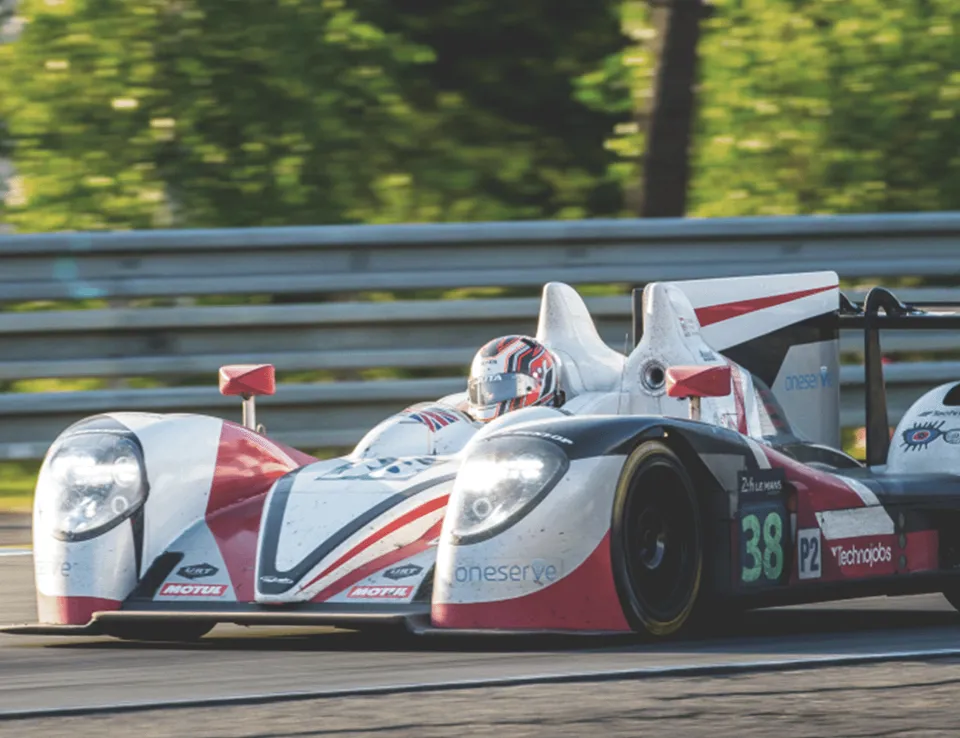
Developing the gearbox for the Peugeot 908 HDi FAP
25 Jul 2022
Staying ahead of the curve is essential when competing at the highest levels of endurance motorsport. The ability to adapt, improve and innovate are some of the core attributes required for the development of championship winning vehicles. It is often this ‘outside of the box’ thinking which can give teams the edge over the competition.
In 2006, Peugeot Sport, part of the PSA group, approached Ricardo with an exciting new challenge. Work had begun on the development of a new diesel-powered vehicle, the Peugeot 908 HDi FAP, to compete in the World Endurance Car (WEC) championships. This would be Peugeot’s first foray into endurance racing since the Peugeot 905 took 1st, 2nd and 3rd place at Le Mans in 1993.
Looking to repeat their success for their return to endurance racing, Peugeot Sport were keen to explore the advantages that diesel propulsion technology offered. This included improved fuel economy and boosting options. However, using diesel technology in an endurance car concept presented some unique challenges for the development of the drivetrain.
With a growing portfolio in endurance racing success stories and a reputation the development of novel and innovative solutions to complex engineering problems, Ricardo’s engineering experts were brought on board to develop a bespoke driveline solution for the Peugeot 908 HDi FAP to overcome these challenges.
Turning gearbox technology on its head
One of the main challenges that Ricardo and PSA Group faced was that diesel engines place significantly higher torque demands on the drivetrain in comparison to petrol alternatives. This is particularly the case when running force induction to increase the power output to turbocharge the engine.
Under normal circumstances, this could be countered with the use of sturdier components which would be able to withstand these increased demands. Unfortunately, these components tend to be both larger and heavier which is naturally detrimental to the performance optimisation of a race car.
To overcome this challenge, Ricardo and PSA engineers went back to the drawing board and developed a solution which moved the position of the dog gears to the input shaft side of the transmission instead of positioning them on the output side of the gear pair. This effectively meant that the gearbox would be running ‘upside down’.
This solution avoided the torque multiplication effect which occurs when they are positioned on the output side. It also enabled Ricardo engineers to build small, lightweight hubs and clutch rings that were capable of handling up to 1200 N-m of torque. This offered effective torque management whilst also optimising the weight and packaging space in line with the performance requirements of an endurance race car.
An evaluation to discover the optimum number of gear ratios in the transmission was also necessary to meet the requirements of the torque curve profile of a diesel engine. A 6-speed unit was specified after considering the unique thrust curves; a result of connecting the 5.5 litre V12 to the Michelin tyres.
The V12 engine itself was relatively long. This presented another set of challenges in packaging a longitudinal 6-speed transmission ahead of the crash structure. The gearbox was therefore designed as an integral part of the rear of the vehicle. A fully stressed gearcase which included the provision for the torsion bar rear suspension was developed. The casing employed highly controlled casting processes to minimise the thickness and weight of the unit to further optimise for vehicle performance.
During the development of the driveline, Ricardo and PSA Group identified that the clutch could potentially be prone to damage when dealing with torque of over 1200 N-m. To counter this, Ricardo packaged the clutch into the rear of the gearbox to enable quick-change servicing of the transmission mid-race.
A successful return to endurance racing for Peugeot Sport
Racing for Team Peugeot Total, the 908 HDi FAP made its debut at the 2007 Le Mans Series season in the 1000 km of Monza where it took 1st and 3rd place spots. Coincidentally, Team Peugeot would also go on to place 1st and 3rd in the LMP1 Teams’ Championships that same year.
However, it was at the 2009 24 Hours of Le Mans that Peugeot Sport achieved arguably their most famous victory when they achieved a 1-2 victory on home turf. 1st place, driven by David Brabham (AUS), Alexander Wurz (AUT) and Marc Gene (ESP), beat the 3rd place competitors by an impressive 6 laps. Together with a third 908 which finished in 6th place, the three vehicles famously performed a formation finish as they crossed the line.
The Peugeot 908 HDi FAP would go on to achieve a win rate of almost 70% across the World Endurance Championships, having won 19 of 28 races between 2007 and 2010.
In 2011, new Le Mans Prototype regulations were brought in which encouraged the use of new technologies to lower the carbon emissions of LMP vehicles. Hybridisation and a reduction in engine sizes and fuel capacity were all examples of changes made to reduce the environmental impact of endurance racing.
As a result, the Ricardo and Peugeot Sport began further development of the transmission for a new hybrid enabled 90X unit in preparation for competition in the 2012 season. Unfortunately, global pressures and economic factors meant that Peugeot Sport took the decision to end its motorsports programme before the 90X could take to the grid.
Steve Blevins, Head of Engineering for Ricardo’s Performance Products segment, reviews the highlights of a successful development programme with PSA Group and Peugeot Sport:
“Working with Peugeot on the unique challenges and demands of this car is one of my fondest memories of my time at Ricardo. It is great to be able to reflect so positively on how we overcame these challenges to achieve success together, and it is a privilege to be able to say that many of the working relationships that were developed on this programme are still ongoing today. It’s fantastic to see that 908s are still winning to this day in the Masters Endurance Series.”
Martin Starkey, Managing Director of Ricardo Performance Products, adds:
“The Peugeot 908 HDi FAP is an iconic piece of Ricardo’s motorsport history. We proudly continue to celebrate its success and our partnership engagement with Peugeot Sport. Photos of the vehicle surrounded by the Ricardo team that developed its novel transmission take pride of place in our transmission facility in Leamington Spa. And rightly so!”
Join us for next month’s retrospective when we will be discussing how engineering collaboration is enabling the improvement of performance and reduction of costs for one of the world’s largest single make motorsport programme.










